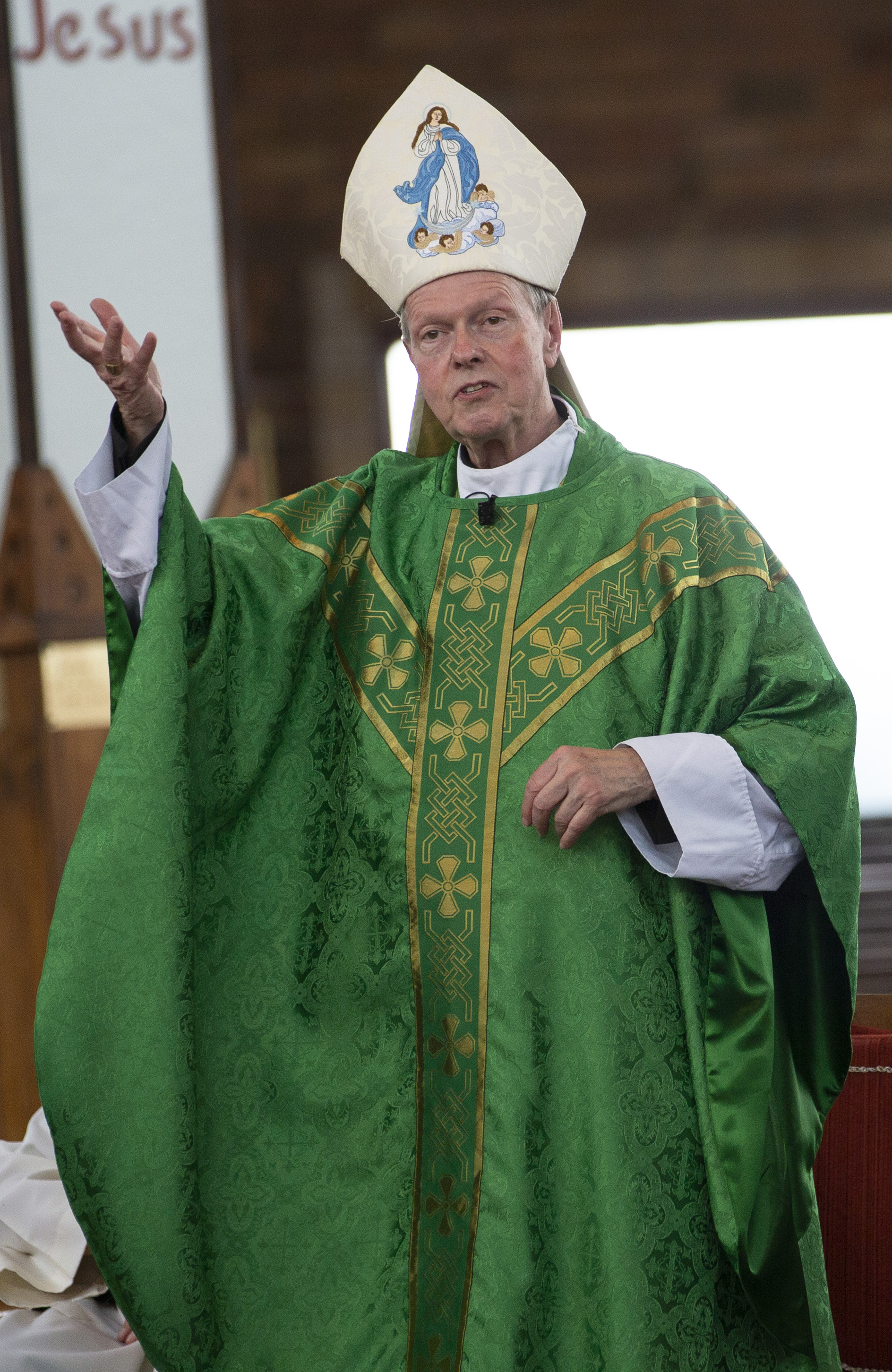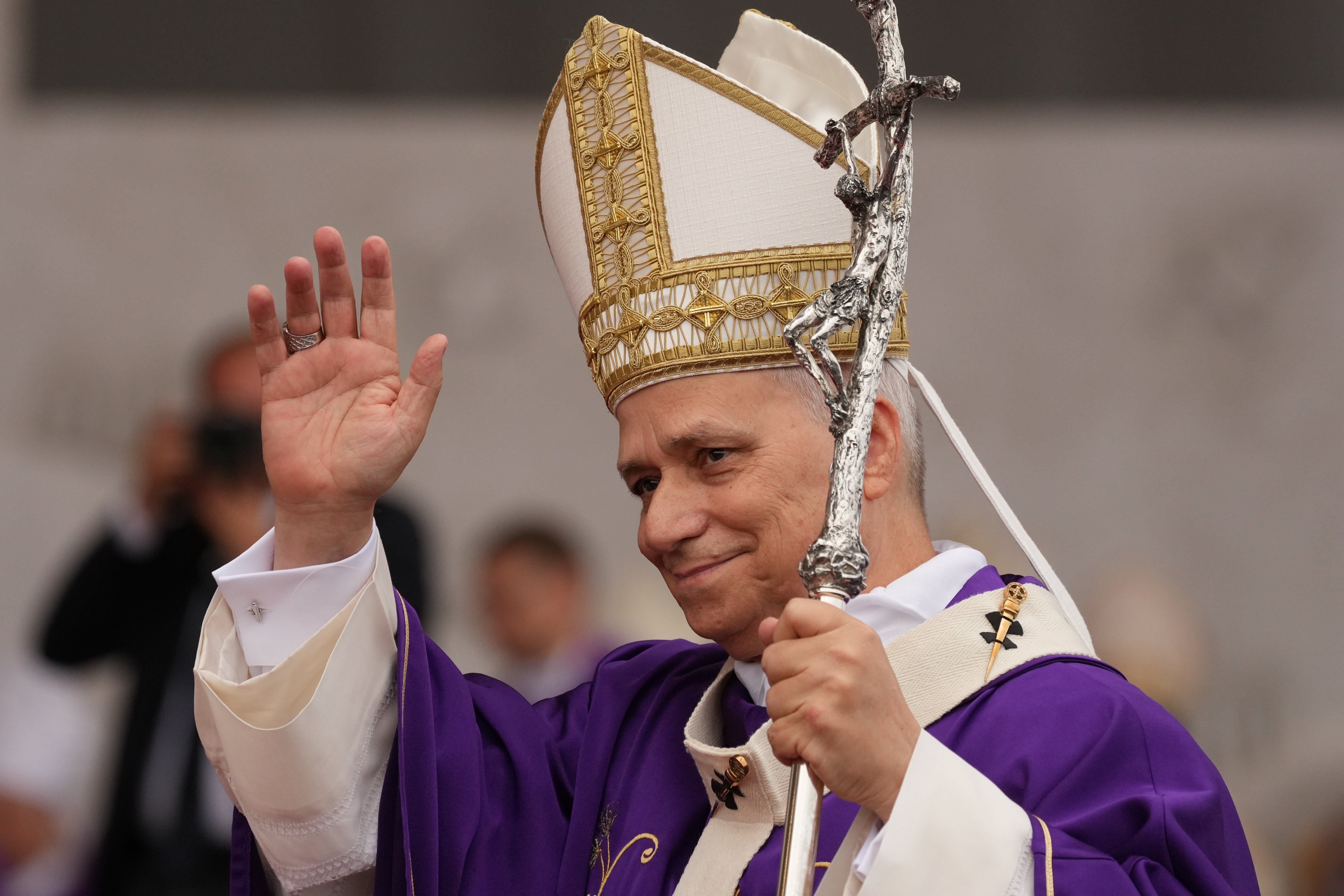April 6, 2018 at 1:53 p.m.
BISHOPS OF DIOCESE
From first cardinal to latest bishop, Albany's spiritual leaders
Established on April 23, 1847, by Pope Pius IX, the Albany Diocese could not begin until it had a bishop. The pontiff selected Bishop John McCloskey, the Brooklyn-born son of Irish immigrants who was ordained a priest in 1834.
In 1843, he was named coadjutor bishop of New York City, meaning that he would succeed when the position was vacant. In the meantime, on Sept. 19, 1847, Bishop McCloskey took up his role as head of a new diocese situated in the capital of the state.
The span of the Albany Diocese was larger than the states of Massachusetts, Connecticut and Vermont combined. Buffalo, created at the same time, was the only other upstate diocese.
Under Bishop McCloskey's guidance, the cornerstone of the Cathedral of the Immaculate Conception in Albany was laid, parishes were established, and orders of men and women religious were brought in to minister to the growing Catholic population.
In 1864, Bishop McCloskey was named bishop of New York City. He was elevated to cardinal in 1875, becoming the first American to achieve that honor. He died in 1885.
BISHOP JOHN CONROY
A native of Ireland, John Conroy was consecrated a bishop and installed as head of the Albany Diocese in 1865. When the ceremony was held at the Cathedral, an Albany newspaper described the new bishop as "an esteemed prelate."
He was already known in Albany because he had been vicar general and pastor of St. Joseph's parish in Albany. Attending his installation as bishop were the heads of 13 other dioceses, a mark of how significant the Diocese of Albany had become in less than 20 years.
During Bishop Conroy's 11-year tenure, he took part in an event that had global implications and one that would not occur again for a century: He attended the First Vatican Council, which was held in Rome.
He resigned as bishop in 1877 and passed away in 1895. An Irish-American newspaper lauded him as "a profound thinker and a learned theologian."
BISHOP FRANCIS MCNEIRNY
Succeeding Bishop Conroy in 1877 was Francis McNeirny, who had been in Albany since 1871. The native of New York City had connections to both his predecessors as secretary to the first bishop and coadjutor to the second.
While head of the Albany Diocese, Bishop McNeirny put a special emphasis on Catholic education, establishing 14 schools, four of which focused on French-speaking students.
When he died in Albany in 1894, The New York Times called him "so distinguished" that "he was frequently consulted by prelates throughout the American Church."
BISHOP THOMAS BURKE
Rev. Thomas Burke, pastor of St. Joseph's parish in Albany, first learned of his 1894 appointment as bishop when a newspaperman asked him for his reaction to the news.
Born in Ireland, Bishop Burke oversaw a smaller area than his predecessors because the dioceses of Syracuse and Ogdensburg had been spun off from Albany. In his tenure, which lasted until 1915, Bishop Burke opened 14 more Catholic grade schools and three high schools.
With immigration on the rise, the Diocese adjusted to the influx of Catholics who spoke other languages, necessitating the creation of "national churches" for such groups as Italian and German Catholics. For Polish Catholics alone, there were 11 parishes scattered throughout the 14 counties of the Diocese.
BISHOP THOMAS CUSACK
A native of New York City who was an auxiliary bishop there, Bishop Cusack had a short-lived tenure as head of the Albany Diocese. After a long bout with cancer, he died in 1918, almost three years to the day after his installation.
His links to the Albany Diocese included studying for the priesthood in Troy and being ordained by Bishop McNeirny. During his brief time as bishop, he opened 11 parishes and five schools, and ordained 35 priests.
BISHOP EDMUND GIBBONS
After the brevity of Bishop Cusack's care for the Albany Diocese came the elongated episcopacy of Bishop Edmund Gibbons that ran from 1919 to 1954.
Born in White Plains and pastor of a parish in Buffalo at the time of his appointment, Bishop Gibbons had links to his new diocese. He had attended St. Mary's Church and Christian Brothers Academy in Albany because his father, a stonecutter, moved to the city to work on the State Capitol.
The bishop's 35 years in the Albany Diocese saw growth in education (the creation of The College of Saint Rose, for example), the addition of new orders of women religious, the start of seminaries, and the beatification of the North American Martyrs. He also created the diocesan newspaper, The Evangelist, in 1926.
On a larger level, Bishop Gibbons guided Catholics through the difficult years of the Great Depression and World War II. The pope accepted Bishop Gibbons' resignation when he turned 85. Bishop Gibbons died 10 years later as the oldest bishop in the U.S.
BISHOP WILLIAM SCULLY
A native of New York City and coadjutor bishop of Albany since 1945, Bishop William Scully stepped into the Chancery with many years of experience in the Diocese.
He inaugurated an annual collection to support schools and charitable programs throughout the Diocese. The baby-boom years in post-war America would lead to large populations of students who needed classrooms. Educational institutions opened in Schenectady, Amsterdam, Gloversville and elsewhere.
Under his leadership, growth also occurred in the Diocese in nursing homes and churches.
Like one of his predecessors, Bishop Scully attended an ecumenical council, the first one in a century. Called by Pope John XXIII and held in Rome, the sessions would lead to major reforms of the liturgy, ecumenical relations and lay involvement.
Bishop Scully died in 1969.
BISHOP EDWARD MAGINN
When Bishop Scully fell ill, but long before he passed away, an apostolic administrator was named to oversee the continuing operations of the Diocese. Made auxiliary bishop in 1957, he was Bishop Edward Maginn, a native of Scotland whose family immigrated to America when he was seven and lived in various places in the Albany Diocese.
Described in "Canals and Crossroads," the history of the Diocese, as "the man-behind-the-bishops" who preceded him, Bishop Maginn made his own mark by becoming a civil rights leader, the creator of inner-city ministries and a force for bringing the changes of the Second Vatican Council to fruition.
He had attended four sessions of that Council that would remake the Church in many ways.
BISHOP EDWIN BRODERICK
When Bishop Scully died, a new bishop was named for the Albany Diocese: Bishop Edwin Broderick, a native of the Bronx who became director of radio and television for the Archdiocese of New York. In that capacity, he oversaw programs hosted by Bishop Fulton J. Sheen.
Serving as bishop of Albany from 1969 to 1976, Bishop Broderick placed an emphasis on openness through a series of listening sessions in the Diocese, ecumenism and interfaith relationships, and expanding Catholic Charities' mission.
In 1976, Bishop Broderick was named director of Catholic Relief Services, the overseas aid agency of the American Catholic Church. His departure opened the door for an historic event.
BISHOP HOWARD HUBBARD
In 1977, a new bishop of Albany was installed - and for the first time, he was a native of the Diocese he was called to serve.
Bishop Hubbard, who was born and raised in Troy, also established another milestone: He served longer as bishop than Bishop Gibbons, eclipsing the latter's 35 years.
In anticipation of his retirement at 75, an age he reached in October 2013, Bishop Hubbard's decades of service and leadership were recently celebrated by the Diocese and through The Evangelist. (For a copy of the Oct. 24-31, 2013, special issue on Bishop Hubbard, call 453-6688.)
BISHOP-ELECT EDWARD B. SCHARFENBERGER
On Feb. 11, 2014, Bishop-elect Edward B. Scharfenberger was appointed by Pope Francis to be the newest leader of the 167-year-old Albany Diocese. [[In-content Ad]]
SOCIAL MEDIA
OSV NEWS
- Full text: Pope Leo XIV Angelus address Dec. 21
- ‘Joy Within His House’: An inside look into the life of cloistered nuns
- Avatar: Fire and Ash
- Washington Roundup: Trump suspends green card lottery; health care subsidies set to expire
- Catholic actor finds Christmas joy in helping US charity
- Trending: A (young) revival in the faith?
- Upcoming symposium gives nod to St. John Paul II’s ‘Letter to Women’
- Experts offer strategies for connection during Christmas amid US ‘epidemic’ of loneliness
- A new rider at the helm: Bishop Richard Moth named archbishop of Westminster
- Cardinal Pizzaballa visits Gaza City’s Holy Family Parish before Christmas







Comments:
You must login to comment.